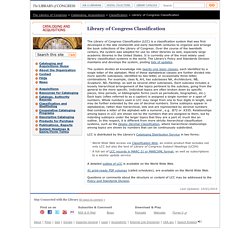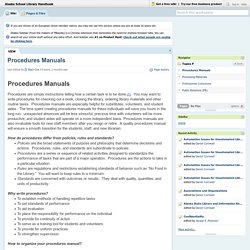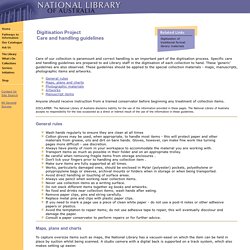

WHS support information. Smith College Libraries. Mobilelibraryohs2003. Violence workplace guide 0070 1. Manual handling and ergonomics. Are your work practices safe? Like any teacher librarian, I have always been happy to do whatever was necessary to achieve my goals, assuming that I was fit and well and able to carry out tasks safely and in accordance with current expectations and work practice.

During the years I have worked in several school libraries. Along the way there have been the usual changes, such as amalgamating a junior and primary school campus; relocating libraries to upgraded premises; and packing, moving and reinstalling resources and shelving associated with renovating. This has been on top of the regular storage, processing, stocktaking and day-to-day circulation tasks. While there have been times when my arms have felt very weary, I never contemplated that the repetitive work involved could cause serious injury. Libraryergonomics. New Resources Jun July.
Library - CQU. 5 New Resources at the Library. When is the last time you talked to a children’s librarian?

If it’s been a while, this is a great time to strike up a conversation. You’ll be surprised at the innovative activities, programs, and services children’s librarians offer young children, and families. Keyword Search Term Entry. Living in the library world: Basic library procedures: Processing library materials. “The librarian’s mission should be, not like up to now, a mere handling of the book as an object, but rather a know how (mis au point) of the book as a vital function.”

Mission del Bibliotecario Jose Ortega Y Gasset (1883-1955 Purpose of processing materials Before items can be shelved and then circulated from the library, they need to be physically prepared. Library materials go through processing so that they can be located, used, and returned to the library from which they originated. Each item in the library must go through physical processing including the applicant of: accession numbers (manual systems) circulation cards (manual systems) pockets (manual systems) plastic covers, laminates, or cases to protect materials barcodes (automated systems) detection strips or slips property stamps Processing can either be done in-house (i.e. in the library) or purchased through a vendor.
Purchased versus in-house processing Steps involved with processing materials. End Processing Guidelines 2014. Cambridge University Library. Library of Congress Classification. Library of Congress Classification. The Library of Congress Classification (LCC) is a classification system that was first developed in the late nineteenth and early twentieth centuries to organize and arrange the book collections of the Library of Congress.

Over the course of the twentieth century, the system was adopted for use by other libraries as well, especially large academic libraries in the United States. It is currently one of the most widely used library classification systems in the world. The Library's Policy and Standards Division maintains and develops the system, posting lists of updates. The system divides all knowledge into twenty-one basic classes, each identified by a single letter of the alphabet. Most of these alphabetical classes are further divided into more specific subclasses, identified by two-letter, or occasionally three-letter, combinations. LCC is distributed by the Library's Cataloging Distribution Service in two forms: A detailed outline of LCC is available on the World Wide Web.
Other classification systems. DDC fun. Get to know the DDC. School Library Management. Alaska School Library Handbook / Procedures Manuals. Procedures are simply instructions telling how a certain task is to be done (1).

You may want to write procedures for checking out a book, closing the library, ordering library materials and other routine tasks. Procedures manuals are especially helpful for substitutes, volunteers, and student aides. The time spent creating procedures manuals for these individuals will save you hours in the long run: unexpected absences will be less stressful, precious time with volunteers will be more productive, and student aides will operate on a more independent basis.
Procedures manuals are also invaluable tools for new staff members after you resign or retire. A quality procedures manual will ensure a smooth transition for the students, staff, and new librarian. American library procedures manuals. LibraryPoliciesandProceduresHandbook. Book Care, Part 2. Book Care, Part 1. Murder in the Stacks (Library Preservation) Carehandlingusers 1. Caring for rare books - Rare Books Collections. Here are a few suggestions on how to store your rare books correctly and how to prolong their life.

Treat with care All books should be handled and stored with care, in order to preserve their good condition or to prevent existing damage becoming even worse. Remember that books printed from the mid-19th century onwards are usually printed on mechanical ground wood pulp paper, which often has a high acidic content and can quickly become discoloured and brittle if not kept in the right conditions. Storing your rare books Large heavy folio-size books are best stored flat. Pulling a book by the top of its spine to take it from the shelf will damage it — as will leaving it face down and open for any length of time. Improving the environment. NLA Digitisation Project: Generic care and handling guidelines. Care of our collection is paramount and correct handling is an important part of the digitisation process.

Specific care and handling guidelines are prepared to aid Library staff in the digitisation of each collection to hand. These 'generic' guidelines are also observed. These guidelines should be applied to the special collection materials - maps, manuscripts, photographic items and artworks. Anyone should receive instruction from a trained conservator before beginning any treatment of collection items. DISCLAIMER: The National Library of Australia disclaims liability for the use of the information provided in these pages. General rules Wash hands regularly to ensure they are clean at all times Cotton gloves may be used, when appropriate, to handle most items - this will protect paper and other materials from grease, oils and dirt on bare hands.
BookCare. Rehinging hardback books. Mending and Repairing Books Part Two. Mending and Repairing Books Part One. Book Repair Manual. The web version of the Simple Book Repair Manual was created by members of Preservation Services, Dartmouth College Library.

Copyright 1996 the Board of Trustees of Dartmouth College, Hanover, New Hampshire. All rights reserved. Permission is granted for copying and redistribution as long as this copyright notice is included. Bmhslibary Report. Processing Library Materials-Book Jackets.